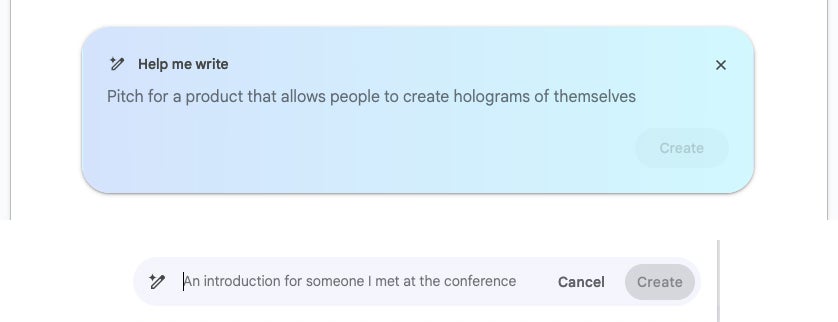Why Protecting Data Centers Requires A Personalized Security Approach

Since each industry has its own unique security and privacy needs, businesses
should work with security providers to vet their services and ensure they’re a
vertical fit. Beyond HIPAA and PCI, these can also include standards in
government like FISMA and FEDRAMP as well as FERPA in education. For businesses
in these industries, partnering with a security provider with background in
their respective vertical is a must. Security needs vary from data center to
data center, so security providers must do a thorough analysis of all potential
risks and threats. These solutions providers should ask hard questions of their
customers to truly understand the security level needed. Businesses need to be
prepared for a worst-case scenario and determine how they can secure customer
data in the event of a disruption. If there’s a power outage, how long can they
be down for? If they’re a retail business, what’s the impact on the bottom line
if an outage happens on Black Friday? How much damage to a business’ reputation
will happen if customer information is leaked in a breach?
ChatGPT’s ‘Perfect Storm’: Managing Risk and Eyeing Transformational Change
At the eye of this storm lies the rapid evolution of ChatGPT’s capabilities,
marking the advent of what we refer to as the “Age of AI” or the “Fourth
Industrial Revolution.” I shed light on ChatGPT’s transformational capabilities,
especially its potential to reshape business operations. In my personal
experience, ChatGPT has proven itself valuable in tasks such as drafting initial
document versions and creating LinkedIn posts, even suggesting suitable emojis!
However, accompanying this storm is a limited understanding of associated risks,
further compounded by an absence of a regulatory framework tailored to such
advanced AI models and varying levels of organizational preparedness for
AI-driven future. ... It calls for interdisciplinary collaboration
involving technological expertise, regulatory compliance, risk management and
operational understanding. By ensuring this balanced and holistic approach,
organizations can fully exploit the advantages of AI technologies like ChatGPT
while mitigating potential risks and pitfalls.
The Six Disruptive Forces That Will Shape Your Business’s Future

Technological advances and digital innovations – the primary driver of
growth in the US economy during the past 25 years – will continue to drive
new business models and ecosystem relationships. The past few decades
witnessed a massive explosion of computing and communications capability,
along with the scaling of new business models, and the ability to connect
every person on the planet through the internet. The next decade promises
even more of this, perhaps exponentially so, driven by technologies such as
artificial intelligence, blockchain, 5G networks, and edge computing. ... A
proliferation of new communication technologies enabled the widespread
adoption of hybrid work models in the wake of the pandemic. Some see this
shift in working patterns as an evolutionary step in how work occurs – an
incremental change. We see it differently: in our view, remote work
represents a step change in how labor markets are organized, raises big
questions about productivity, and creates important collateral effects in
other areas of the economy.
How to use the new AI writing tool in Google Docs and Gmail

The AI tools in Slides and Sheets are not yet available, but Help Me Write
is in limited preview; you can try it out in Google Docs or Gmail on the web
by signing up for access to Workspace Labs with your Google account. (You’ll
be put on a waitlist before being granted access.) Like the well-known
ChatGPT, Help Me Write is a chatbot tool that generates written text based
on prompts (instructions) that you give it. Whether you’re a professional
writer or someone who dreads having to write for your job, the potential of
AI assistance for your writing tasks is appealing. Help Me Write can indeed
write long passages of text that are reasonably readable. But its results
come with caveats including factual errors, redundancy, and too-generic
prose. This guide covers how to use Help Me Write in both Google Docs and
Gmail to generate and rewrite text, and how to overcome some of the tool’s
shortcomings. Because it’s in preview status, keep in mind that there may be
changes to its features, and the results it generates, when it’s finally
rolled out to the public.
Winning the Mind Game: The Role of the Ransomware Negotiator

Professional negotiation is the act of taking advantage of the professional
communication with the hacker in various extortion situations. The role
comprises four key elements:1. Identifying the scope of the event - Takes
place within the first 24-48 hours. Includes understanding what was
compromised, how deep the attackers are in the system, whether the act is a
single, double or triple ransomware, if the attack was financially motivated
or if it was a political or personal attack, etc. In 90% of cases, the
attack is financially motivated. If it is politically motivated, the
information may not be recovered, even after paying the ransom.2. Profiling
the threat actor - Includes understanding whether the group is known or
unknown, their behavioral patterns and their organizational structure.
Understanding who the attacker is influences communication. ... This can be
used for improving negotiation terms, like leveraging public holidays to ask
for a discount.3. Assessing the "cost-of-no-deal" - Reflecting to the
decision makers and the crisis managers what will happen if they don't pay
the ransom.
RFI vs. RFP vs. RFQ: What are the differences?

Each document -- a request for information (RFI), a request for proposal
(RFP) and a request for quote (RFQ) -- has a distinct purpose when
undertaking a significant project, even if some overlap exists. While it's
possible to issue all three types of requests for a single project, buying
teams will typically only issue one or two of them, given the overlap. ...
Software buying teams use a request for information when they want
additional information from vendors before finalizing the RFP or RFQ. The
buying team may lack clarity on requirements, want more information on
available options in the market or need details validated, which the
vendors' industry experts can do. ... The RFP will list the requirements in
detail, provide a recommended timeline and request pricing from the vendors.
The buying team might ask specific questions about the vendor, such as the
length of time they've been in business, completion proportion of similar
projects, annual sales and number of staff. The RFP response may have
mandatory terms to follow, such as a submission due date and other critical
information.
Contextual Computing and the Internet of Things: A Perfect Match

The convergence of contextual computing and the IoT is a natural
progression, as both technologies rely on data to function effectively. By
combining the contextual awareness of AI-powered systems with the vast
amounts of data generated by IoT devices, we can create intelligent systems
that are capable of making real-time decisions and providing personalized
experiences. One of the most significant benefits of this convergence
is the ability to create more efficient and sustainable systems. For
example, in the realm of energy management, IoT devices can collect data on
energy consumption patterns, while contextual computing can analyze this
data to identify inefficiencies and suggest improvements. This could lead to
the development of smart grids that optimize energy distribution and reduce
waste, ultimately contributing to a more sustainable future. Another area
where the combination of contextual computing and the IoT can have a
significant impact is in healthcare.
Beyond Requirements: Tapping the Business Potential of Data Governance and Security

The teams responsible for data protection and security have often been
pitted against the teams that want to leverage data for business insight.
This conflict is unsustainable when the business needs maximum agility to
respond to volatile market conditions and unexpected competitive pressures.
In fact, the alignment of internal objectives and incentives is an
opportunity to accelerate outcomes for the business. ... Functions of data
governance, data security and data privacy are becoming increasingly
interdependent within the enterprise. Stakeholder communication and
collaboration are critical. But in many cases, there is a counterproductive
feedback loop inhibiting this critical cultural alignment. Siloed technology
often obstructs meaningful interdisciplinary collaboration, which prevents
the adoption of more unified supporting technologies. In this sense, both
automation and integration should be key areas of technological focus for
today’s businesses. Now is the time for change, as many organizations risk
falling behind in their data governance and security efforts.
Cybersecurity Pioneer Calls for Regulations to Restrain AI

“We know that you can use deep fakes to do scams or business email
compromise attacks or what have you.” Current tools gave criminals and other
bad actors the ability to generate unlimited personas, which could be used
for multiple types of scams. More broadly, the march of AI also means that
whatever can be done purely online can be done through automation and
large-scale language models like ChatGPT, he said, which has obvious
implications for developers. However, he said, humans are harder to replace
where there’s an interface between the real world and online technology.
Rather than studying to build software frameworks for the cloud, he said,
“You should be studying to build software frameworks for, let’s say, medical
interfaces for human health because we still need the physical world. For
humans to work with humans to fix their diseases.” Looking slightly further
ahead, he said that people who worried about the likes of ChatGPT becoming
too good, or achieving AGI, “haven’t paid attention”, as that is precisely
what the declared goal of OpenAI is.
The steep cost of a poor data management strategy

For many organizations, the real challenge is quantifying the ROI benefits
of data management in terms of dollars and cents. Unlike other business
investments, the returns may not be immediately apparent because the
benefits accrue over time. This places a major focus on the initial
investment instead of the potential outcomes and ROI, often disguising data
management’s incredible value. Let’s look at how we can resolve this—while
there is still time to do so. Regardless of your industry, data is central
to almost every business today. Leveraging that data, in AI models, for
example, depends entirely on the accessibility, quality, granularity, and
latency of your organization’s data. Without it, organizations incur a
significant opportunity cost. A few years ago, Gartner found that
“organizations estimate the average cost of poor data quality at $12.8
million per year.’” Beyond lost revenue, data quality issues can also result
in wasted resources and a damaged reputation.
Quote for the day:
"Even the demons are encouraged when
their chief is "not lost in loss itself." -- John Milton
No comments:
Post a Comment